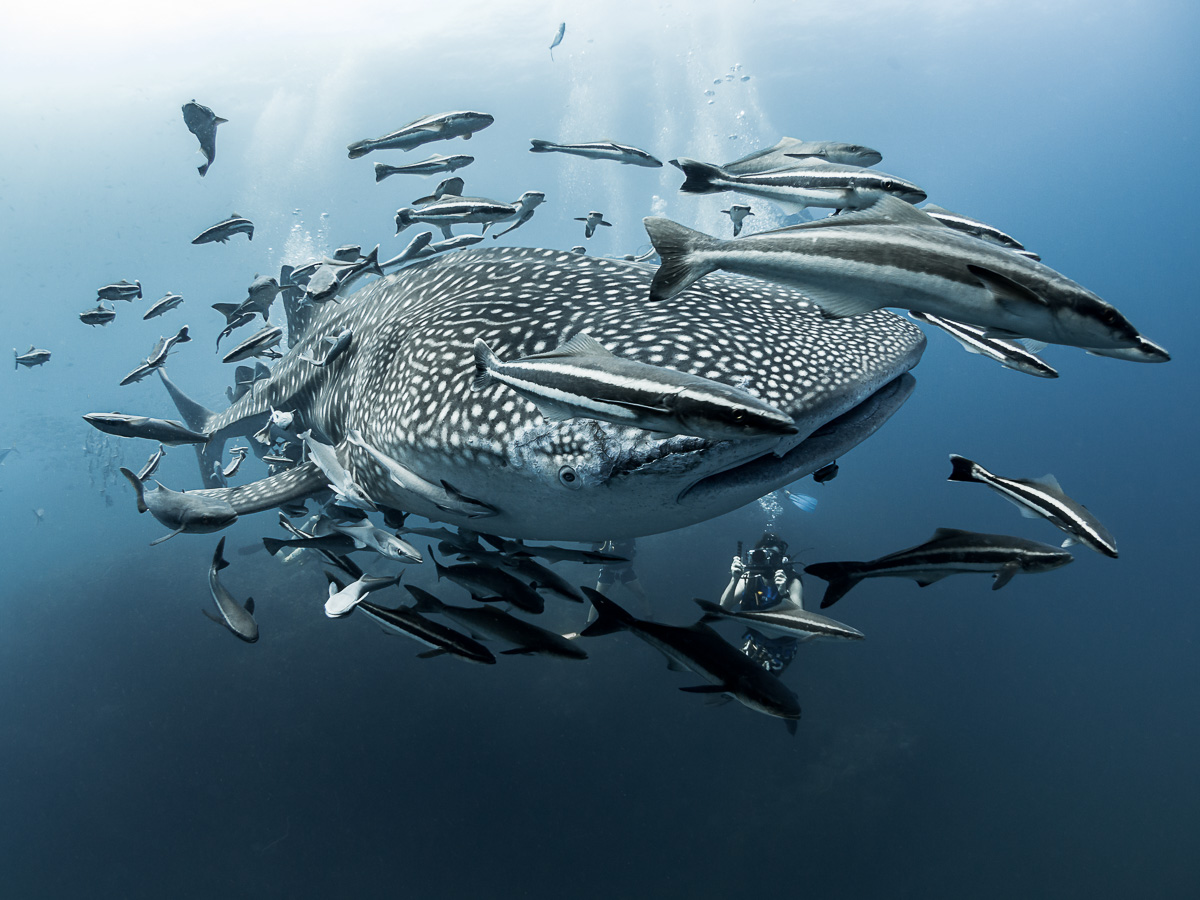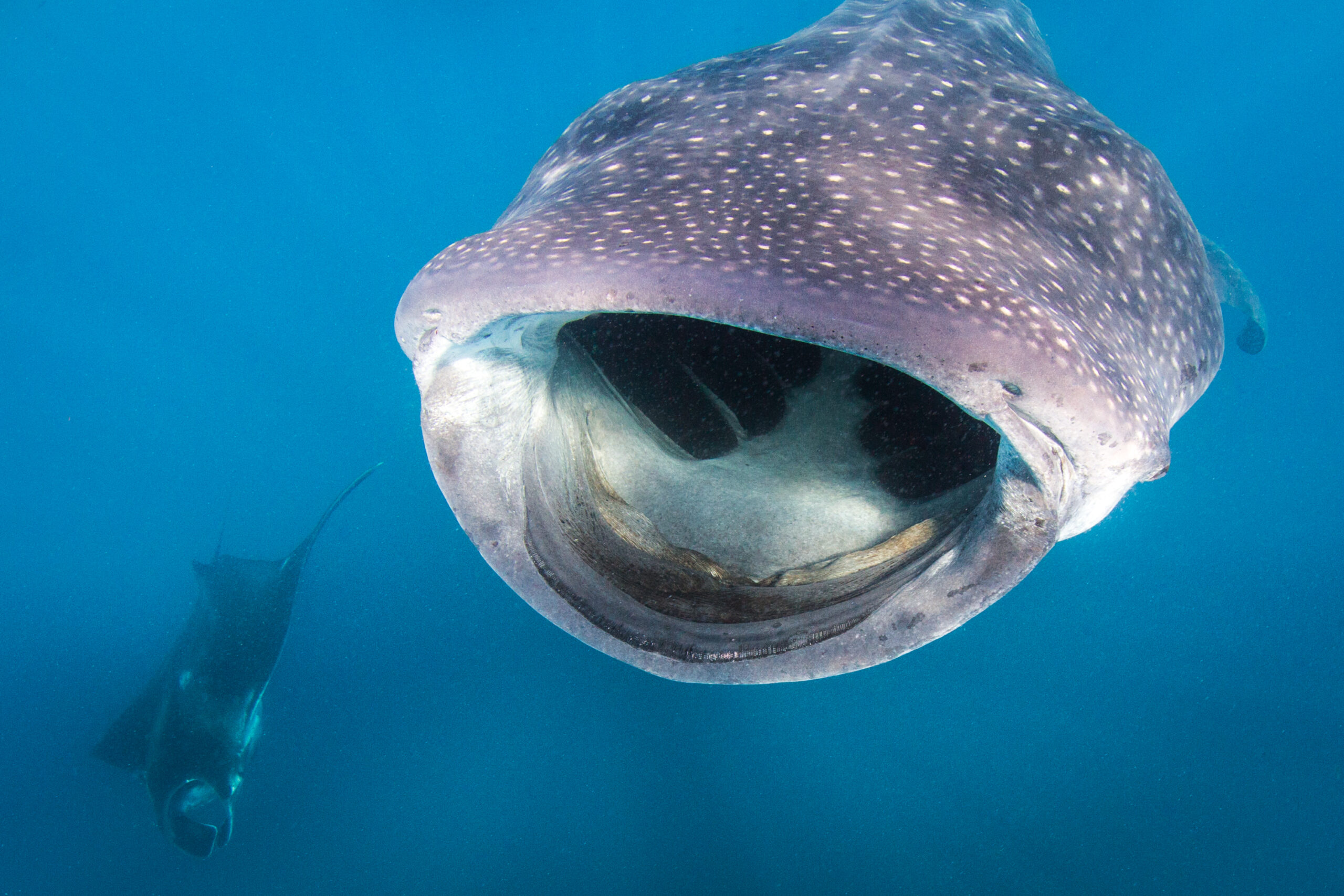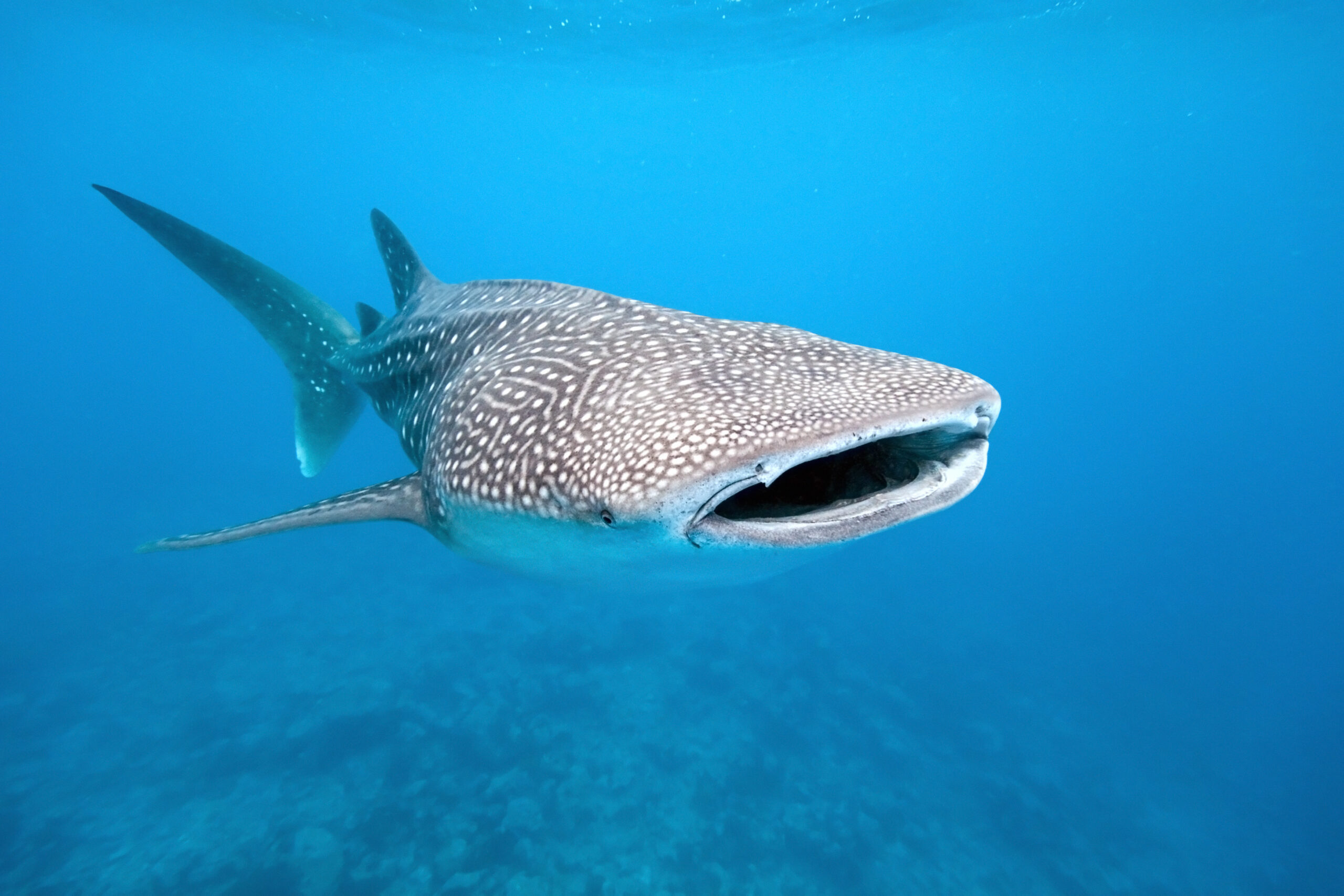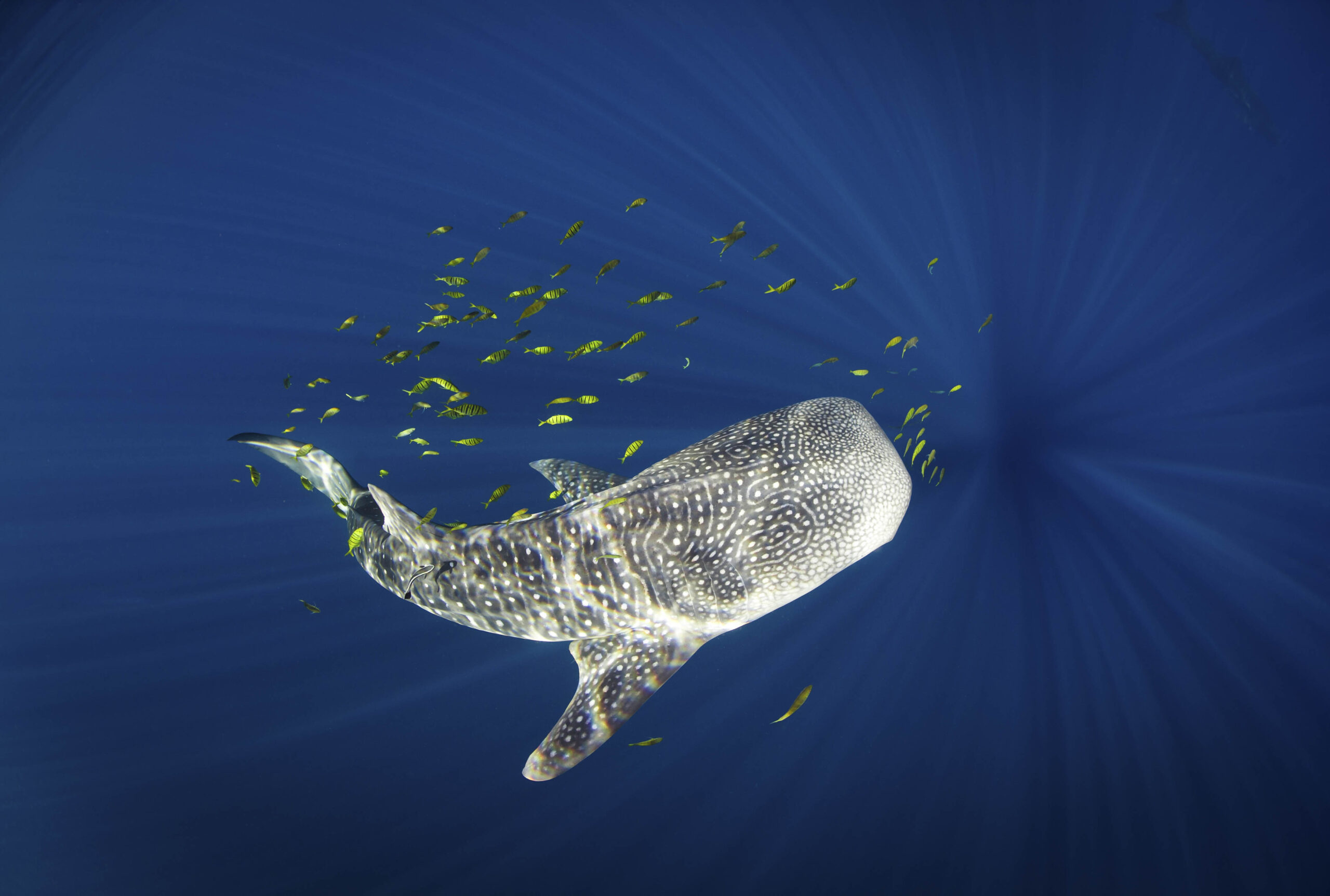5 Fin-credible Facts About Whale Sharks
Let’s celebrate these fascinating fish on International Whale Shark Day and every day!

Whale sharks are one of my favorite marine species. They are some of the most majestic and beautiful creatures in the sea. And while our team at Ocean Conservancy celebrates these gorgeous animals on a regular basis, I’m happy to bring you some fin-credible facts just in time for #InternationalWhaleSharkDay!
1 – They are the largest fish in the world!

Yep, that’s right. Whale sharks are actually sharks, which means they are fish—not mammals. They can also grow up to 40 feet long and weigh up to 20,000 pounds, which is bigger than any other fish out there. But don’t worry if you see one in the wild, they’re gentle giants and won’t hurt you. However, they are wild animals so if you’re lucky enough to encounter a whale shark, please remember to maintain a safe distance and never touch them.
2 – Each shark is uniquely polka-dotted!

Each whale shark has distinctly individual markings, just like a human fingerprint. This proves handy for researchers identifying specific individuals and tracking their behavior around the Gulf. It’s also very pretty! Their spots can be white, yellow and gray, and are displayed in a checkerboard pattern.
3 – We sometimes get together for a feast.
Whale sharks are largely independent and spend most of their time alone, except for the remoras and pilot fish that tag along with them and help them stay clean by removing parasites and bacteria from their bodies. Although thought to be largely independent, whale sharks will hang out in groups if there’s a ton of plankton or fish eggs in an area, such as the mouth of the Mississippi River in the Gulf of Mexico.
4 – I have a giant mouth, and it has a porpoise…I mean, purpose.

With mouths up to three feet wide and more than 350 rows of teeth, the whale shark is strictly a filter feeder. This basically means they swim with their mouths open all the time, straining suspended nutrients and plankton over a specialized filtering structure.
5 – I like it hot.

Whale sharks prefer warm waters and tropical climates and are most likely to be seen off the coasts of Central and South America, south Asia, and Africa. They are also known to migrate every spring to the central coast of Australia where the Ningaloo Reef supplies an abundance of plankton. Up until recently, very little was known about where whale sharks lived. Tagging whale sharks to track their movement, as well as recording sightings online, has helped researchers learn more about where in the world whale sharks live.